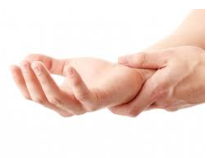
Active Release Technique: Carpal Tunnel Syndrome Treatment
If you have carpal tunnel syndrome, you know how painful and limiting it can be. Carpal tunnel is one of the most common nerve conditions in the country, with estimates approximately 2% of the adult population in the United States suffer from the condition.
Something you might not know it that soft-tissue treatments such as, Active Release Technique can help most people suffering from carpal tunnel syndrome relieve pain and regain normal use of their forearms, wrists, hands, and fingers without having to have surgery.
If you have noticed limited the use of your hands and wrists, you may not need surgery to restore normal function. At Shepard Pain and Performance Care in Bloomington, IL, we help people with carpal tunnel every week. If you suffer from symptoms of carpal tunnel syndrome, contact us today to learn how we may be able to help.
 What Is Carpal Tunnel Syndrome?
What Is Carpal Tunnel Syndrome?
Carpal tunnel syndrome is what’s known as an entrapment neuropathy, which just simply means a pinched nerve. Carpal tunnel syndrome occurs when the median nerve is compressed. The compressed nerve may produce pain, numbness, and if progressed long enough weakened hands. Symptoms of carpal tunnel syndrome include:
● Numbness or Tingling sensations in the hand or fingers.
● Pain that spreads from your wrist, up your arm, and to your shoulder.
● Weak hands, often displayed by a tendency to drop things.
One of the problems with Carpal Tunnel Syndrome Treatment is that a number of things could be causing it. Things such as a broken wrist, a repetitive stress injury, arthritis, or any injury that irritates or compresses the nerve running through the carpal tunnel can lead to carpal tunnel syndrome. However, it’s rare that a single cause is identified as the culprit.
- Median nerve at the Thenar muscles.
- Median nerve at the Carpal Tunnel.
- Median nerve at the Flexor Digitorum Superficialis.
- Median nerve at the Pronator Teres.
- Median nerve at the Ligament of Struthers.
- Median nerve at the Coracopectoral Tunnel.
- Median nerve at the Scalenes.
Who’s At Risk?
No one is immune to carpal tunnel syndrome. While there are a number of identified risk factors, factors that put you at a higher risk of developing the condition include:
● Anatomy – Women are diagnosed with carpal tunnel syndrome more often than men are. Things such as a broken or dislocated wrist also put you at an increased risk.
● Illness – Inflammatory conditions such as rheumatoid arthritis, infections, or anything that causes chronic inflammation in the wrists or hands can affect the soft-tissue in your wrist and compress the carpal tunnel nerve.
● Body Fluids – When your body retains more fluid than it should, it can cause added pressure that compresses the median nerve. Conditions that increase the risk of carpal tunnel syndrome include pregnancy, kidney failure, obesity, menopause, and many others.
● Workplace – Workplace factors may increase your risk of developing carpal tunnel. Jobs that require extensive and repetitive use of the hands and wrists can lead to repetitive stress injuries (RSI). Most RSIs are caused by the slow accumulation of scar tissue or fascia on the muscles, joints, tendons and ligaments of the body. Excess scar tissue or muscle adhesions can limit range of motion, cause pain, and increase pressure on nerves.
Active Release Technique Can Help!
Shepard Pain and Performance Care in Bloomington, IL treats many patients suffering from carpal tunnel symptoms with Active Release Technique. Our approach to Carpal Tunnel Syndrome Treatment is to start from the neck and work our way down through the arm, wrist, and hand. A thorough examination allows us to identify specific entrapment points and any muscle adhesions that are causing nerve compression.
Active Release Technique is a manual soft-tissue mobilization therapy, which means that we use our hands to identify muscle adhesions and scar tissue. Once problem areas are identified, firm and specific strokes are used to break apart and remove problematic growths. Removing adhesions and scar tissue returns the body to its natural state and helps release the pinched or compressed nerve.
If you are suffering from symptoms associated with carpal tunnel syndrome, surgery is not your only option. In many cases, restoring the body to its natural condition through soft-tissue mobilization therapies such as Active Release Technique can relieve your pain and restore function. If you are seeking Carpal Tunnel Syndrome Treatment please Contact us today to discuss your situation and learn if Active Release Technique is right for you.
